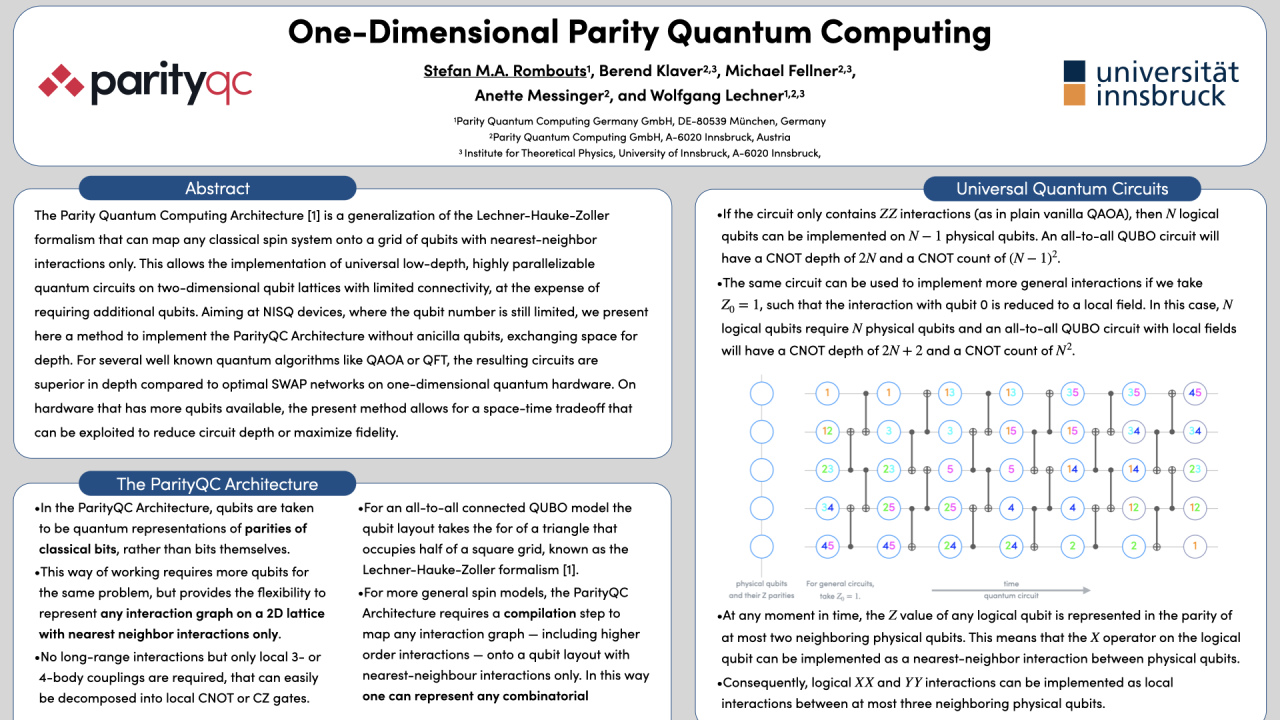

One-Dimensional Parity Quantum Computing
Monday, May 13, 2024 3:00 PM to Wednesday, May 15, 2024 4:00 PM · 2 days 1 hr. (Europe/Berlin)
Foyer D-G - 2nd floor
Research Poster
Quantum Computing - Basics and TheoryQuantum Computing - Technologies and ArchitecturesQuantum Program Development and Optimization
Information
Poster is on display and will be presented at the poster pitch session.
The Parity Quantum Computing Architecture can map any classical spin system onto a grid of qubits with nearest-neighbor interactions only. This allows the implementation of universal low-depth, highly parallelizable quantum circuits on two-dimensional qubit lattices with limited connectivity, at the expense of requiring additional qubits. Here we present a method to implement the ParityQC Architecture without anicilla qubits, exchanging space for depth. For several well known quantum algorithms like QAOA or QFT, the resulting circuits are superior in depth compared to optimal SWAP networks on one-dimensional quantum hardware.
Contributors:
The Parity Quantum Computing Architecture can map any classical spin system onto a grid of qubits with nearest-neighbor interactions only. This allows the implementation of universal low-depth, highly parallelizable quantum circuits on two-dimensional qubit lattices with limited connectivity, at the expense of requiring additional qubits. Here we present a method to implement the ParityQC Architecture without anicilla qubits, exchanging space for depth. For several well known quantum algorithms like QAOA or QFT, the resulting circuits are superior in depth compared to optimal SWAP networks on one-dimensional quantum hardware.
Contributors:
Format
On-site


